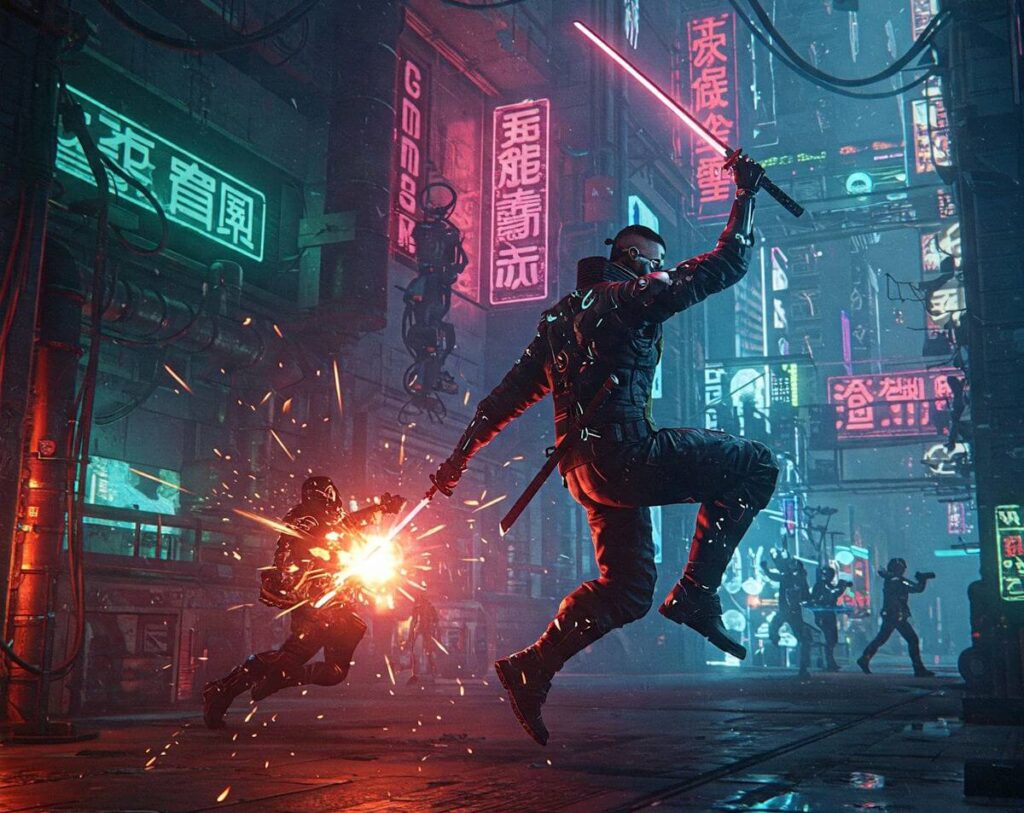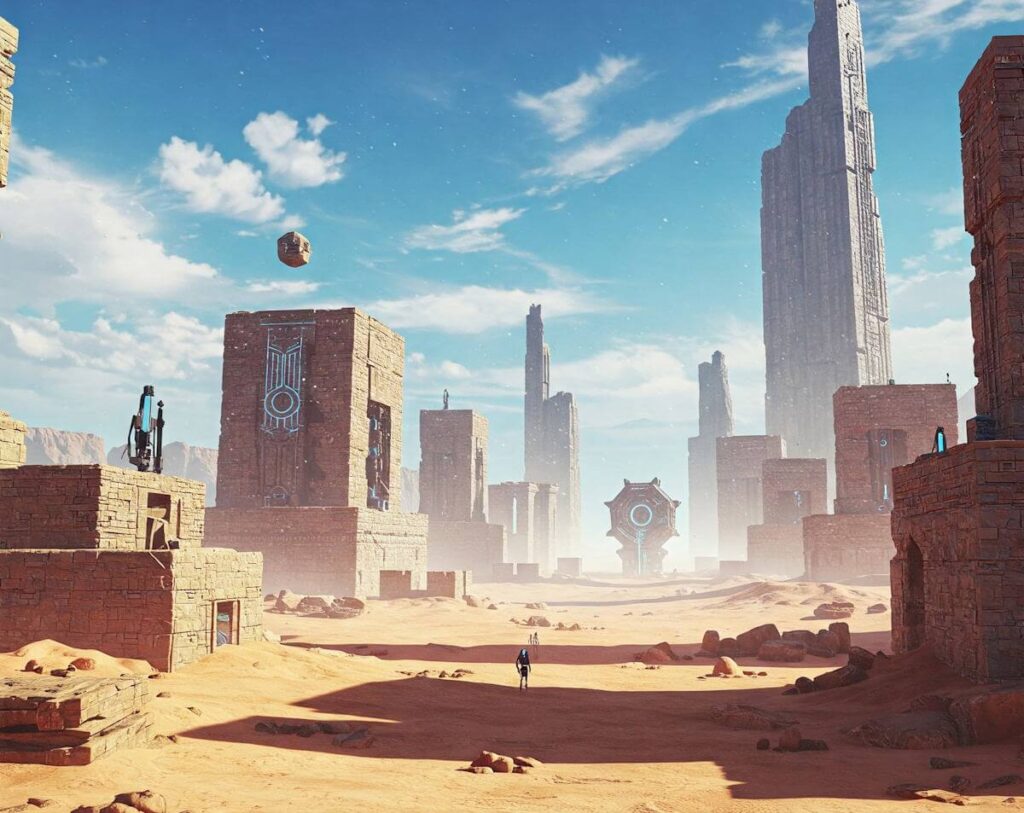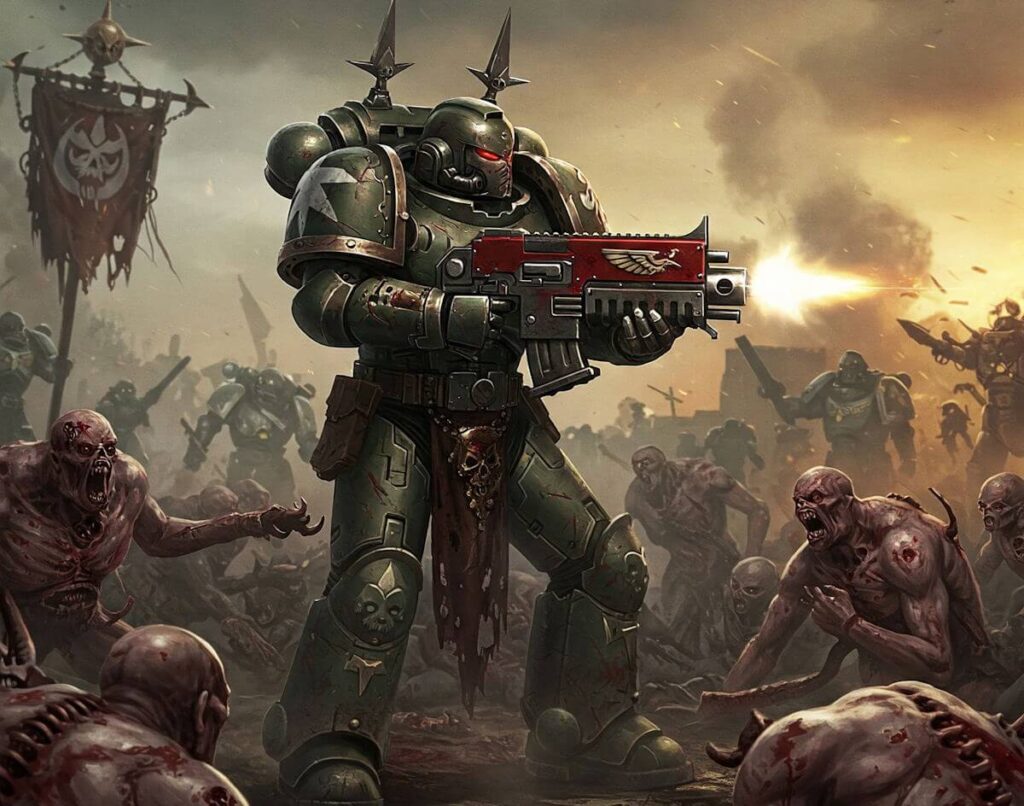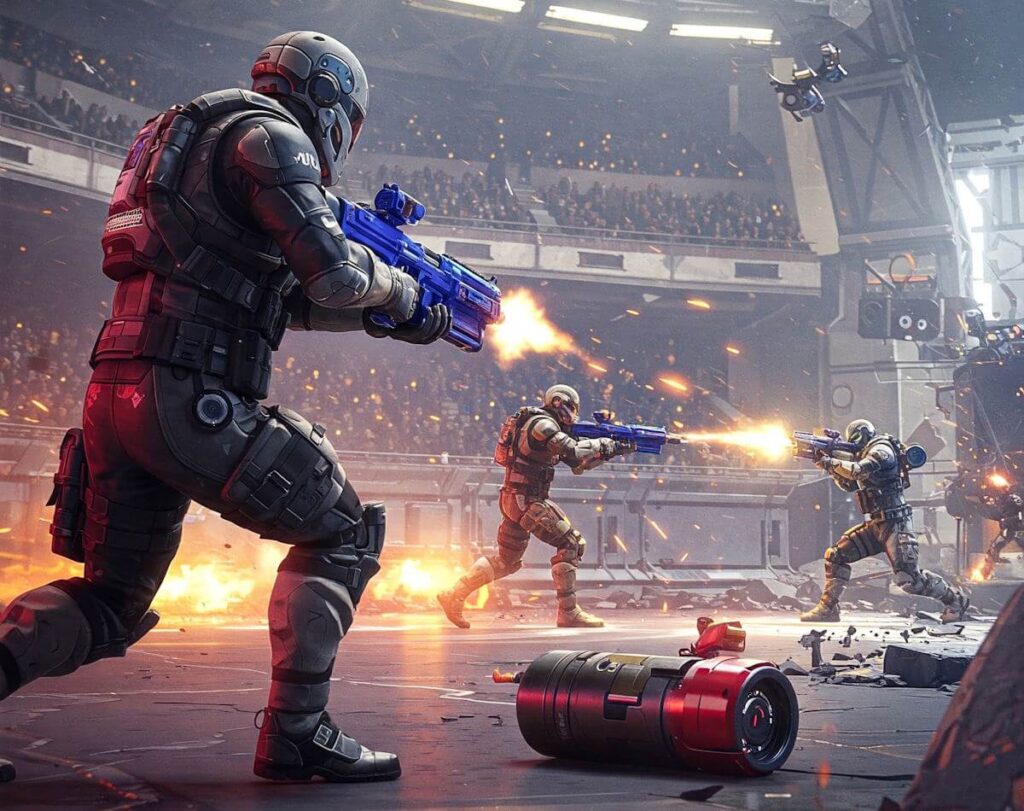Ghostrunner 2, a highly anticipated sequel developed by One More Level and published by 505 Games, continues to push the boundaries of the cyberpunk genre while refining the exhilarating parkour mechanics that captivated players in the original installment. Released on October 26, 2023, Ghostrunner 2 builds upon the solid foundation established by its predecessor. The first game, touted for its innovative blend of fast-paced action and stunning visuals, received widespread acclaim and established a dedicated fanbase eager for more. The sequel not only seeks to expand upon the narrative and gameplay of Ghostrunner but also to further immerse players in its dystopian world.
In this latest installment, players assume the role of Jack, a cybernetic warrior navigating a world teetering on the brink of chaos. Ghostrunner 2 maintains the original’s hallmark of intense combat and fluid movement but introduces new elements and enhancements that elevate the experience. With refined mechanics that allow for seamless navigation through challenging environments and improved combat options, the game aims to deliver an even more thrilling adventure. The developers have taken player feedback into consideration, ensuring that the sequel addresses any shortcomings of the first game while introducing fresh gameplay features.
The cyberpunk aesthetic remains a cornerstone of the franchise, and Ghostrunner 2 enhances this aspect through detailed level designs and atmospheric storytelling. The game’s art direction continues to dazzle, placing players in a neon-lit world where every corner unfolds a new narrative thread and challenge. By marrying parkour mechanics with a rich, immersive environment, Ghostrunner 2 represents a significant milestone in the evolution of action-platformers, ensuring both veterans of the original game and newcomers are captivated from the very first jump.
Graphics and Art Style
Ghostrunner 2 showcases a visually stunning representation of a dystopian cyberpunk world, employing an advanced graphics engine that truly enhances the gaming experience. This sequel builds upon the already impressive foundation laid by its predecessor, offering a more refined and immersive visual aesthetic. The game’s graphics are marked by meticulous attention to detail, with intricate character models and environments designed to pull players deeper into the game’s narrative. Each environment is crafted with a distinct personality, embodying the chaos and complexity of a futuristic metropolis.
The use of color in Ghostrunner 2 plays a pivotal role in defining its atmosphere. Bright neon hues contrast sharply against darker backgrounds, creating a vibrant visual palette that is both inviting and unsettling. This dichotomy serves to underscore the game’s themes of hope against despair, making each level’s ambiance resonate with emotional weight. Additionally, the dynamic lighting effects contribute significantly to the overall immersion. Shadows dance across walls and surfaces, enhancing the sense of movement during high-speed parkour sequences that are characteristic of the gameplay.
Notably, the character design in Ghostrunner 2 is equally impressive. The protagonist and other significant figures are crafted with a blend of stylized features and functional aesthetics, embodying the essence of cyber-enhancements typical of the genre. These character models not only look impressive but are also animated with fluidity and precision, which complements the fast-paced nature of the gameplay. Such attention to detail in both design and animation elevates the player’s engagement, ensuring that each movement feels impactful and exhilarating.
Ultimately, the graphics and art style of Ghostrunner 2 work in harmony to create an engaging experience. By leveraging cutting-edge technology, distinctive design choices, and a cohesive visual narrative, the game successfully immerses players in a captivating cyberpunk landscape, thus enriching the overall experience of navigating this high-octane world.
Gameplay Mechanics and Parkour System
Ghostrunner 2 showcases a remarkable evolution in gameplay mechanics, particularly in its parkour system, which remains a defining feature of the franchise. Building on the strong foundation laid by its predecessor, the sequel introduces enhanced fluidity in movement, allowing players to traverse the environments with remarkable ease. The parkour mechanics in Ghostrunner 2 give players the ability to perform an array of impressive maneuvers such as wall runs, slides, and rapid ascents that create an exhilarating sense of speed and agility.
Combat mechanics in Ghostrunner 2 complement the parkour system seamlessly, allowing players to engage in dynamic encounters while navigating through levels. The player can utilize a variety of weapons, from traditional katanas to advanced electronics, providing a diverse combat experience. This diversity encourages players to experiment with different strategies, combining parkour and combat to overcome adversaries. The addition of special abilities, such as time dilation and environmental interactions, enhances this gameplay dynamic, providing tactical advantages during intense combat scenarios.
Compared to its predecessor, Ghostrunner 2 integrates these gameplay elements more intuitively, resulting in a more cohesive experience. In the original game, players often felt confined to linear pathways; however, this sequel offers multiple routes and strategies, allowing for creative problem-solving when facing enemies and obstacles. The design encourages players to think on their feet, leveraging the parkour system to execute daring escapes or surprise attacks. Overall, the refinements made in Ghostrunner 2 foster a gameplay experience that is both engaging and challenging, pushing players to master the sophisticated mechanics of this cyberpunk universe.
Level Design and Environments
In Ghostrunner 2, the level design is a standout feature that showcases the blend of creativity and technical prowess inherent in modern game development. Each environment is meticulously crafted to provide not only a backdrop for gameplay but also an immersive space that engages players through varied themes and aesthetics. From futuristic urban landscapes adorned with neon lights to mystifying industrial complexes, every level is designed with a unique character that enhances the overall experience.
The verticality integrated into the levels presents inherent design challenges that are masterfully addressed throughout the gameplay. Players are often required to ascend towering structures or descend into intricate networks of interconnected buildings. This vertical design allows for a dynamic exploration of space, as players utilize their parkour abilities to navigate through challenging terrain at speed. The inclusion of vertical elements not only increases the excitement but also requires players to think strategically about their movements, ensuring that the gameplay remains fluid and fast-paced.
Moreover, Ghostrunner 2 embraces the concept of exploration and replayability through its diverse environments. Each level is packed with hidden areas, alternate routes, and secrets waiting to be uncovered, encouraging players to revisit locations with new abilities or techniques. This layered approach to level design fosters a sense of discovery while maintaining the high-octane action for which the game is known.
Environmental storytelling further enriches the player’s journey through these settings. The meticulously designed locales subtly convey history and narrative, drawing players deeper into the game’s lore and enhancing the overall immersion. Clues embedded in the architecture and atmosphere provide context for the dystopian world, encouraging players to engage with their surroundings on a deeper level. Ultimately, the level design in Ghostrunner 2 not only challenges players physically but also invites them to explore a rich, interconnected world that is integral to the game’s cyberpunk aesthetic.
Storyline and Characters
The narrative of Ghostrunner 2 builds upon the established lore of its predecessor, delivering a rich cyberpunk world teeming with action, intrigue, and philosophical underpinnings. Set against the backdrop of a dystopian future, players continue the journey of the protagonist, Jack, a unique character imbued with advanced capabilities that hone his parkour skills. The storyline unfolds as Jack navigates a world inflamed by conflict and power struggles, enticing players to immerse themselves in this high-stakes environment.
Key characters enrich the narrative, each possessing distinctive attributes and motivations that influence the plot’s trajectory. Jack, as the central figure, is complemented by allies and adversaries that challenge his resolve and ethics. The antagonist, an enigmatic figure commanding formidable forces, presents dilemmas that engage players not only with combat but with moral choices that affect their journey. This dynamic interplay fosters character development, making them relatable and memorable to players, as emotional stakes are deeply interwoven with gameplay.
Moreover, Ghostrunner 2 explores themes such as the nature of free will, identity, and the consequences of technological advancement. The story serves as a vehicle for these themes, allowing players to reflect on critical issues while engaging in thrilling parkour sequences. As players traverse through various environments, each with its narrative significance, the game merges storytelling with action seamlessly. The pacing of the plot is meticulously crafted, ensuring that players remain engaged while exploring both the vivid settings and the underlying philosophical questions.
Incorporating these narrative elements not only enriches the Ghostrunner 2 experience but also demonstrates how storytelling can enhance gameplay. By intertwining character arcs with the deft mechanics of parkour, the game captivates players, fostering a deeper connection to the unfolding drama within this electrifying cyberpunk universe.
Sound Design and Music
The sound design and music in Ghostrunner 2 play a pivotal role in crafting an immersive gaming experience that complements its fast-paced gameplay. The audio elements are intricately woven into the intricate tapestry of the game’s cyberpunk setting, enhancing both the atmosphere and emotional engagement of the player. The soundtrack, a vital aspect of the overall auditory experience, consists of pulsating electronic rhythms and haunting melodies that resonate throughout the various levels. This careful selection of music not only amplifies the adrenaline rush of parkour challenges and combat action but also helps to create a sense of urgency and tension that is crucial for maintaining player engagement.
Furthermore, the sound effects in Ghostrunner 2 are engineered to accentuate each movement and action within the game. From the swift whoosh of the protagonist’s blade slicing through enemies to the subtle hum of machinery in the background, every sound contributes to immersing players deeper into the cybernetic world. The precision and clarity of these effects are commendable, allowing players to feel both the impact of their actions and the gravity of their environment. The varied audio cues also assist in gameplay by providing feedback that is vital for timing and execution, particularly during intense sequences where every millisecond counts.
Voice acting in Ghostrunner 2 further enriches the narrative dimension of the game, adding depth and personality to key characters. The delivery of lines is not only skillful but complements the tense and dramatic moments, bringing the storyline to life. The synergy between voice work, music, and sound effects fosters an overall atmosphere that encourages players to delve deeper into the story, cultivating a sense of connection to the protagonist and their quest. In this way, the sound design and music in Ghostrunner 2 are essential components that not only enhance the gameplay experience but also contribute significantly to the game’s compelling narrative arc.
Challenges and Difficulty Levels
Ghostrunner 2 has garnered attention for its inventive approach to gameplay challenges, weaving together a multitude of difficulty settings that cater to diverse player preferences. Each available difficulty level is meticulously designed to ensure that both newcomers and seasoned players can find an enjoyable experience, making it a standout title in the platforming genre. The game challenges players to master intricate parkour mechanics and combat techniques while adjusting the difficulty to strike a balance between accessibility and skill development.
The design philosophy behind Ghostrunner 2 emphasizes player mastery while still accommodating those who may not have extensive experience with fast-paced action games. On lower difficulty settings, players may encounter more forgiving enemy behaviors and reduced penalties for mistakes, enabling them to familiarize themselves with control mechanics and level layouts. This careful introduction encourages experimentation and builds confidence, which is vital for enjoyment in a game that demands precision and quick reflexes.
Conversely, the higher difficulty settings dramatically ramp up the challenge. Enemy aggression and damage output increase, and players are faced with stringent time constraints that can make even the basic traversal of levels feel daunting. This becomes an exhilarating experience for adept players, who revel in the sense of accomplishment that follows mastering complex sequences and overcoming seemingly insurmountable barriers. The skill curve is well-calibrated, promoting a rewarding sense of progression while still allowing moments for players to reflect on their strategies and executions.
Ghostrunner 2 also introduces additional features to tailor the challenge, such as customizable modifiers and leaderboards, appealing to competitive players keen on refining their skills. Ultimately, the combination of varying difficulty levels and supporting mechanics cultivates a landscape where all players can grow and find enjoyment, regardless of their prior experience with the genre.
Community Feedback and Reception
The release of Ghostrunner 2 has been met with considerable enthusiasm from both players and critics, underscoring the game’s refined approach to the cyberpunk parkour genre. Many gamers have praised its fluid movement mechanics, which seamlessly blend first-person platforming with intense combat, a hallmark of the series. Players have highlighted the sharp controls and responsive gameplay, enabling a rewarding sense of momentum that enhances the overall experience. The design of the game world, steeped in a visually stunning cyberpunk aesthetic, has also garnered positive feedback, with many expressing appreciation for the richly detailed environments that invite exploration and experimentation.
However, not all feedback has been predominantly positive. Some players have pointed out that certain aspects, such as the difficulty spike experienced during specific levels or boss encounters, can be quite challenging and possibly deter more casual gamers. Critics have suggested that while the game excels in its mechanics, improvements in the narrative depth and character development could elevate the overall engagement of the story, which some have found lacking in comparison to the gameplay experience.
The community dynamics surrounding Ghostrunner 2 have been thriving, with active discussions on platforms such as Reddit and dedicated gaming forums. Here, players share tips, strategies, and even discuss potential mods that could enhance or alter the gameplay experience. The developer has shown a commitment to post-launch support, addressing bugs and considering player suggestions for future updates. This responsiveness has fostered a positive relationship between the developers and the community, reinforcing the notion that player feedback is valued.
In conclusion, Ghostrunner 2 has successfully resonated with many gamers, striking a balance between exhilarating gameplay and community engagement, even as it navigates challenges regarding difficulty and narrative depth. The continued dialogue within its player base suggests a promising future for ongoing enhancements and collaborations.
Conclusion and Recommendations
In summary, Ghostrunner 2 positions itself as an impressive continuation of the original game, successfully blending cyberpunk aesthetics with exhilarating parkour mechanics. The refined gameplay not only builds upon the fast-paced action familiar to fans of the genre but also introduces new features that enhance the overall experience. The introduction of additional narrative elements and character development allows players to immerse themselves deeper in the thrilling post-apocalyptic world. Furthermore, the meticulously crafted environments and level designs invite exploration while presenting increasingly challenging obstacles that keep players engaged.
One of the standout aspects of Ghostrunner 2 is its balance between accessibility for newcomers and depth for seasoned players. The game’s mechanics cater to various skill levels, making it appealing to both casual gamers and those seeking a more intense challenge. The addition of new combat options and dynamic scenarios provides a fresh take on the fast-paced action, allowing for varied gameplay strategies. It’s evident that the developers have considered what fans loved about the original while also seeking to elevate the experience in meaningful ways.
For potential players, those who enjoy action-platformers with a strong emphasis on speed and precision will find much to love in Ghostrunner 2. Fans of the cyberpunk genre, as well as individuals who appreciate intricate level design and a compelling aesthetic, will also feel right at home. However, players looking for a slower-paced or narratively-driven experience may want to approach the game with caution, as its focus leans more heavily on frantic action and dexterity.
Ultimately, Ghostrunner 2 is a commendable addition to the gaming landscape, combining the thrill of parkour with a distinct artistic vision. It promises to delight both dedicated fans of the series and newcomers alike, making it well worth considering for your gaming library.




